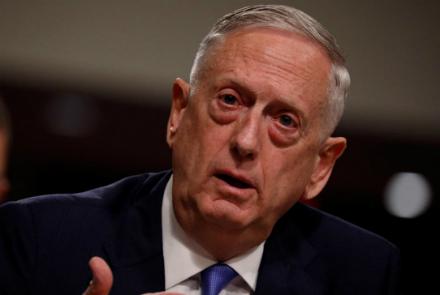US Defense Secretary James Mattis says North Korea’s latest missile test, which US experts say indicated an increasing technological sophistication, did not demonstrate an imminent threat of nuclear attack on the United States.
“No, not yet,” Mattis said when a reporter asked whether the Nov. 29 test indicated a full capability to strike the US, the Associated Press reported.
“It has not yet shown to be a capable threat against us right now,” Mattis added.
His remark suggested he believed the Trump administration has additional time to pursue diplomacy before resorting to military options for eliminating the North’s nuclear arsenal.
“We’re still doing the forensic analysis,” he added, apparently referring to intelligence agencies’ study of imagery of the flight of the missile and its payload, which presumably included a mock warhead.
The Trump administration has not publicly disclosed what it knows about what happened to the missile’s re-entry vehicle, which detaches from the missile body during flight and is designed to protect warheads from heat creating by re-entry into the Earth’s atmosphere.
Shortly after the November test, Mattis said the missile flew higher than any previous North Korean test, and that it represented a continued effort to build a missile capable of threatening the US Since then, Mattis has said little about it publicly, and the administration has sent mixed messages about its willingness to begin talks with North Korea.

